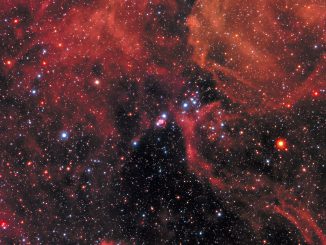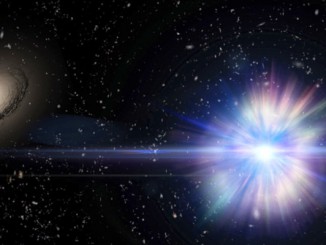Eight hundred million light years away in the constellation Pegasus, a galaxy plows through the diffuse gas that pervades a galactic cluster. As if pushing through a tenuous headwind, a phenomenon known as ram pressure stripping is occurring, pushing gas and dust away from the disk of galaxy JW100, creating streams of debris and pockets of star formation that give it a jellyfish-like appearance. The observation by the Hubble Space Telescope’s Wide Field Camera 3 was collected as part of an investigation exploring how such tendrils – and stars – form in such “jellyfish galaxies.” Here are two views of JW100, a closeup and a wider shot putting it in context with other members of the same galactic cluster.





